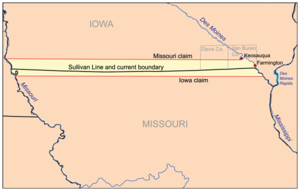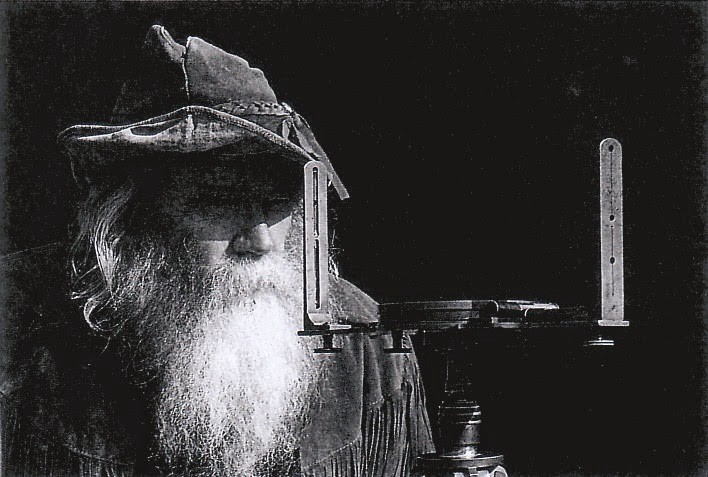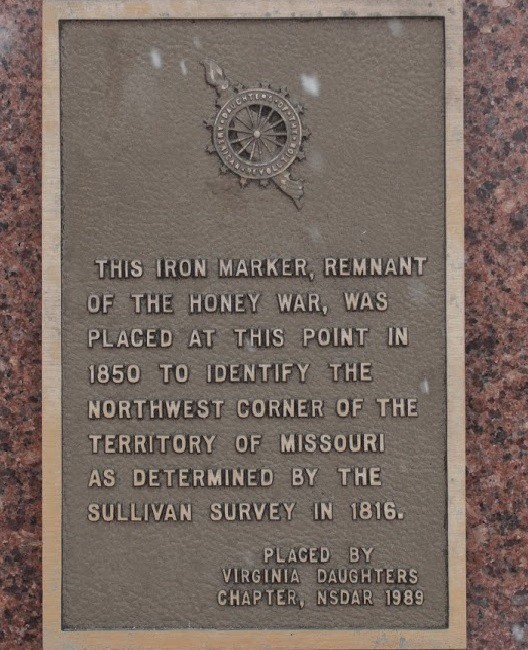Encyclopedia Dubuque
"Encyclopedia Dubuque is the online authority for all things Dubuque, written by the people who know the city best.”
Marshall Cohen—researcher and producer, CNN
Affiliated with the Local History Network of the State Historical Society of Iowa, and the Iowa Museum Association.
HONEY WAR
HONEY WAR. A 1839 boundary dispute between Iowa and Missouri in 1839 nearly led to hostilities.
In 1816 the Sullivan Line, established by surveyor J.C. Sullivan marked Native American territory. The 100-mile straight line was the accepted boundary in 1821 between the new state of Missouri and the Michigan Territory, which included the land that would become the state of Iowa. In 1821 when Missouri became a state the Sullivan Line was extended past the Des Moines River and used to mark Missouri’s Northern border. The Missouri Compromise also designated the Sullivan Line as the dividing point for free states and slave states. Any new state North of the line was free and any new state South of the line would allow slavery. The Sullivan Line was continually used for treaties with Native Americans. In 1824 the Federal Government signed an important treaty with the Osage Nation defining the Sullivan Line as one of their tribal borders. (1)
No one disputed the line until 1837 when new Missouri settlers discovered the rich land and the honey trees in a strip of timber north of the Sullivan Line — in what is now southern Davis and Van Buren counties. In 1837 Missouri decided to have the Sullivan Line resurveyed. They decided this in part because they wanted to extend their border a little further North where there was much fertile land and abundant bee trees. Honey was an important commodity on the frontier since it was used as a natural sweetener and the wax was used to make candles.
To establish this reconsideration of the northern border, the Missouri General Assembly in 1837 ordered the northern line to be surveyed again. While the Wisconsin Territory refused to join the survey, Missouri moved ahead. (2) Missouri hired J. C. Brown to redo the Sullivan Line. Sullivan’s work made it difficult for Brown to find his original line. Sullivan said that he ended his line at the rapids of the Des Moines River when in reality he had ended at the rapids of the MISSISSIPPI RIVER. Another issue was that Brown could not find the markers Sullivan placed as he had used mounds of dirt and wooden posts to mark the way. Midwestern weather lead to these marking methods not lasting long. Another issue was that Sullivan apparently forgot that a compass points to magnetic North and not true North therefore his line was not the true North South line that it should have been. Finally Sullivan seemed to have issues with keeping the line straight as it was not parallel and varied up and down by a few miles. Not knowing about Sullivan’s errors Brown tried to find the rapids of the Des Moines River and settled on what he described as “ripples” in the Des Moines that he believed was what Sullivan had meant. This error caused Brown’s line to be between 9 and 13 miles farther North than Sullivan’s. (3)
In early 1838 the Missouri Legislature passed a bill that claimed the Brown Line as their new Northern border. They justified their decision by saying that their constitution stated that Missouri’s boundary line was to be ran from the “rapids of the river Des Moines”. Of course the constitution was based off of Sullivan’s incorrect interpretation and was actually supposed to be the Mississippi rapids. Shortly after the bill was passed Wisconsin, who bordered Missouri, asked the Federal Government to decide which line was correct but was ignored. (4)
When Iowa became a U.S. territory in 1838, Congress decreed that President Martin Van Buren would appoint three commissioners — from Missouri, the Iowa Territory and the United States — to survey and mark the boundary between the two states. Albert M. Lea, a soldier and engineer, represented the United States. Dr. James Davis was appointed for the Iowa Territory. Missouri's Gov. Lilburn Boggs declined to appoint a commissioner. (5)
Arguments concerning the boundary line between the state of Missouri and Territory of Iowa led to flaring tempers as a Missouri sheriff attempted to collect taxes from settlers who believed they lived in Iowa. This was followed by an unknown person, presumed to be a Missouri settler, vandalizing several trees in the region in which bees had built honeycombs. Honey, used as a sweetener on the frontier, was a valuable commodity. When a Missouri sheriff again attempted to collect taxes, he was arrested by an Iowa sheriff and the "war" began. Missouri militiamen rushed into service. Governor Lucas of Iowa found himself with twelve hundred Iowa farmers and businessmen eager for battle.
Believing that action was being taken in haste, Iowa legislators, with their Missouri counterparts, arranged for the United States Supreme Court to settle the matter. Missouri then disbanded its troops.
Iowa troops, including some from Dubuque, marched off to war not realizing it had been stopped. Confused and angry, the troops milled around southern Iowa until they received word to disband. One report stated several troops "executed" a cow so that they could at least return home with their guns fired. Another story involved a deer. The "soldiers" divided the deer in half and hung the carcasses from a tree. The halves were labeled Gov. Boggs and Gov. Lucas and were used for target practice. (6)
Even though Iowa gained statehood in 1846, its southern border with Missouri remained uncertain until 1849, when the Supreme Court ordered the Sullivan Line resurveyed and permanently marked. The court also agreed that Iowa's far southeastern border would follow the Des Moines River to its confluence with the Mississippi, putting Keokuk in Iowa instead of Missouri.
The new survey was accepted by the court in 1851, and the boundary dispute settled. (7)
---
Source:
1. "Time Machine: The Honey War, When Iowa and Missouri Almost Came to Blows Over the Border," https://www.thegazette.com/history/time-machine-the-honey-war-when-iowa-and-missouri-almost-came-to-blows-over-the-border/
2. Graham, Jed, "“Death to the Pukes!” — The Honey War of 1839," Online: https://historyofyesterday.com/death-to-the-pukes-the-honey-war-of-1839-1ab44cda4141
3. Jarrett, Matthew, "The Honey War," Online: https://www.forgottenhistory.me/war/the-honey-war
4. Ibid.
5. "Time Machine..."
6. Ibid.
7. Ibid.




